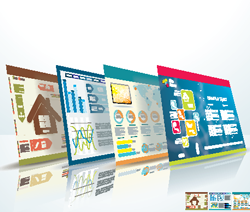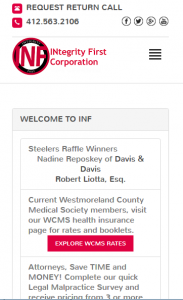In order to have a website for your company, you typically need to have three things:
- A domain
- A web host
- Your coded website files
Domain
As soon as you know the name of your company, you will want to start looking into a domain name, or what a user will type into their web browser to get to your site. Generally, your domain name should be short and to the point. There are two reasons for this:
- You want people to easily get to your site and short names are the easiest to remember
- This will most likely be your email address, so it should be easy to say and spell for others
For example, if your company name is “Betty Brown’s Cupcakes”, you may want to look into purchasing the domain “BBCupcakes.com”. Some companies purchase multiple domain names and have them all forward to the main domain. Using the cupcake company as an example, they may purchase “bettybrownscupcakes.com” as well as “bbcupcakes.com”. Then they could have “bettybrownscupcakes.com” forward automatically to “bbcupcakes.com”. This way, their customers are able to type the company name into the address bar and still arrive at the company’s main site.
A domain is normally purchased by year through a domain provider, but multiple years can be purchased as well, sometimes with a small per year discount. The domain provider should provide a control panel that will allow you to configure your web host and email settings.
Web Host
 Once you have a domain, you will need a space upon which to put your website. This is where a web host comes in. A web host will provide space on a server for you to put your site files. They should assign you an IP address or server address, which you will need to enter in your domain settings. This way, when your domain name is typed in a browser, the browser looks to the domain provider, who provides the server where your website sits. The browser then looks at that server and is able to display your web page.
Once you have a domain, you will need a space upon which to put your website. This is where a web host comes in. A web host will provide space on a server for you to put your site files. They should assign you an IP address or server address, which you will need to enter in your domain settings. This way, when your domain name is typed in a browser, the browser looks to the domain provider, who provides the server where your website sits. The browser then looks at that server and is able to display your web page.
Website files
 Once you have your structure in place for hosting your site, you will need an actual website to go on it. To create your site, you will want to speak with a web design company about the best options for you. They should go over site structure, content and framing as well as many other things that go into the creation of a website.
Once you have your structure in place for hosting your site, you will need an actual website to go on it. To create your site, you will want to speak with a web design company about the best options for you. They should go over site structure, content and framing as well as many other things that go into the creation of a website.
Bonus: SSL Certificate
It is highly recommended that an SSL certificate be purchased for your site to protect your site visitors. For more information on SSL certificates, please see IFTS’ blog entry on SSLs.
Please see our blog entry next time on “My Site is Up and Running, so Now What?”








